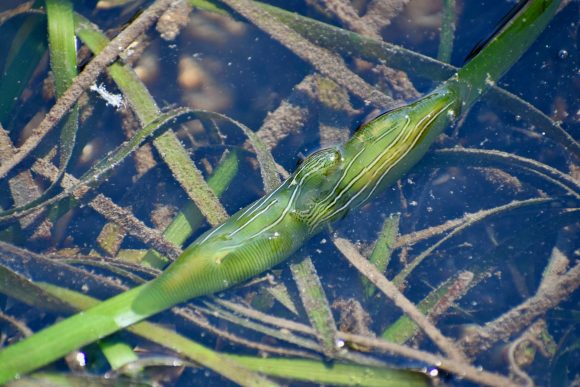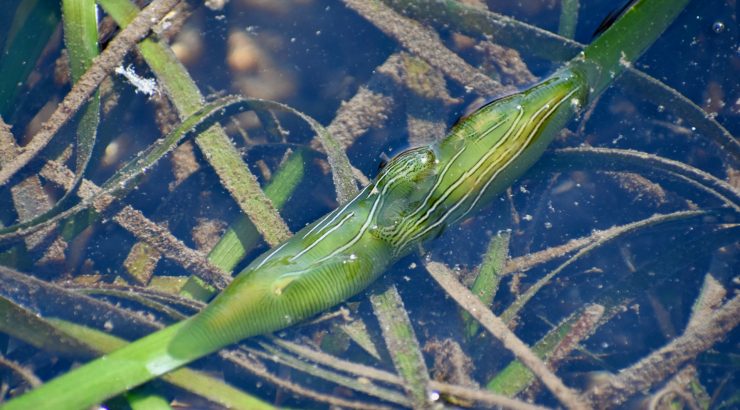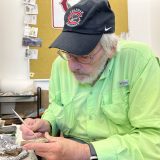Tiny Sea Slug Could Have a Big Impact on Coastal Conservation Efforts New Research from the lab of Environmental Science and Policy Professor Richelle Tanner
April 11, 2025
 As climate change accelerates, finding effective solutions that deliver outsized impact becomes increasingly crucial. New research led by Richelle Tanner, assistant professor of environmental science and policy, shows that a tiny marine mollusk native to the U.S. West Coast may hold the key to more effective coastal restoration.
As climate change accelerates, finding effective solutions that deliver outsized impact becomes increasingly crucial. New research led by Richelle Tanner, assistant professor of environmental science and policy, shows that a tiny marine mollusk native to the U.S. West Coast may hold the key to more effective coastal restoration.
The study, “Variation in thermal tolerance plasticity and the costs of heat exposure in the estuarine sea hare, Phyllaplysia taylori,” published in the journal Ecosphere, reveals that this small sea slug is both remarkably heat-tolerant and genetically diverse across its wide range — key traits that make it an ideal partner for climate-resilient coastal restoration.
The findings come at a critical time, as coastal development and industrial activities continue to degrade seagrass beds worldwide. Despite their small footprint, seagrass ecosystems provide outsized environmental benefits — serving as essential nurseries for commercial fish species, storing significant amounts of coastal carbon, protecting shorelines from waves, and helping to buffer against ocean acidification.
The sea hares act as natural vacuum cleaners in these vital ecosystems, consuming problematic algae (epiphytes) that grow on seagrass blades. This cleaning service is becoming increasingly important as warming waters accelerate algal growth, which can smother seagrass and inhibit photosynthesis.
Dr. Tanner and her colleagues aimed to understand how sea hares would fare in future warming waters, and whether there is genetic resilience to survive future conditions. They found two major surprising and encouraging results: First, they documented an extraordinary 11°C range in heat tolerance among individual sea hares — the highest variation ever reported within a single species across multiple animal groups. Second, sea hares from Washington State to California’s Morro Bay are part of a single, well-mixed genetic population, defying expectations about their limited dispersal ability. Despite having no larval stage where they can drift in ocean currents, these creatures maintain genetic connectivity across their entire range, providing an additional buffer against environmental changes.
The implications for seagrass restoration are significant. The study suggests that eelgrass sea hares could be valuable partners in restoration projects, helping to maintain the health of the entire ecosystems around newly planted seagrass beds.
“This species has no major evolutionary pressure from rising temperatures, which means it is well-positioned to support seagrass restoration efforts for decades to come,” said Dr. Tanner. “Against all evolutionary odds, this tiny slug is performing an outsized ecosystem service and will continue to do so with ongoing climate change. Now it’s up to us to put it to work in restoration efforts.”


